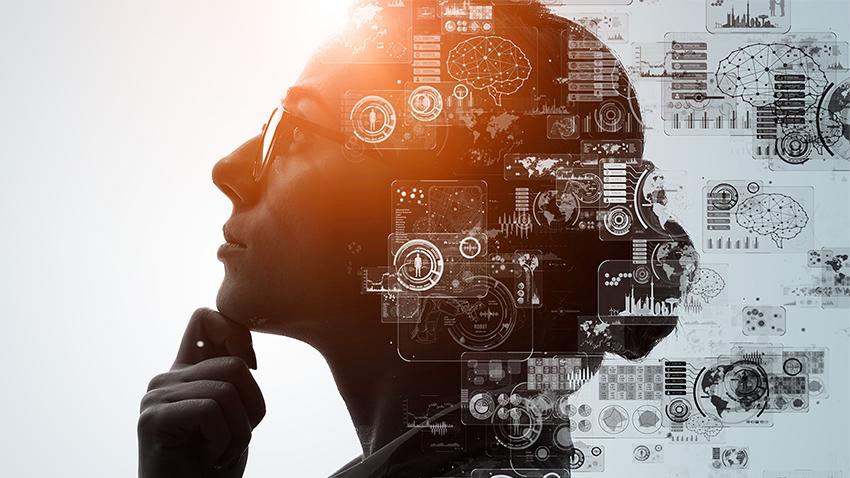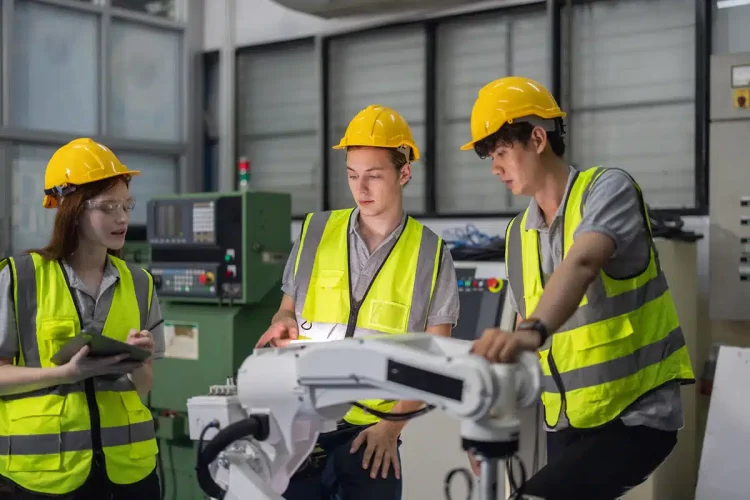Introduction
The global labor market is undergoing rapid transformation. As automation, artificial intelligence (AI), robotics, and other technological advances reshape industries, the demand for skilled workers in new and emerging roles is surging. At the same time, many traditional jobs are being automated or modified, leaving workers in need of new opportunities. The question is no longer whether technology will disrupt jobs but how individuals, industries, and governments can adapt to these disruptions.
One of the most effective ways to ensure that the workforce remains relevant and competitive in this evolving landscape is through retraining and upskilling. By providing workers with the tools and knowledge they need to thrive in new roles, we can not only address the challenges of job displacement but also unlock new opportunities for growth, innovation, and economic development. This article will explore the strategies, methods, and benefits of retraining and upskilling programs to help workers transition into emerging jobs.
1. The Changing Landscape of the Workforce
1.1 Technological Disruption and Its Impact on Jobs
Technological advancements are driving significant changes across various industries, from manufacturing to healthcare and services. Automation and AI are increasingly capable of performing tasks that were traditionally done by humans. For example, robots now handle assembly line tasks, chatbots provide customer service, and AI algorithms analyze large sets of data with greater speed and precision than ever before.
This shift presents both opportunities and challenges. While automation leads to increased productivity and efficiency, it can also render some jobs obsolete. Workers in fields like manufacturing, retail, and customer service may find themselves displaced by technologies that can perform the same tasks more efficiently. As a result, the labor market is experiencing a skills gap, where the supply of skilled workers does not meet the demand for emerging roles that require more advanced technical knowledge.
1.2 The Need for New Skills
As traditional jobs disappear, new types of roles are emerging in sectors like data science, cybersecurity, AI development, and green energy. However, these roles often require a different skill set than those in more traditional industries. Skills such as critical thinking, problem-solving, digital literacy, and technical proficiency are now essential to succeed in many new roles.
Moreover, the pace of change in the job market means that workers must constantly update their knowledge and skills to stay competitive. As automation becomes increasingly prevalent, lifelong learning will be the key to workforce adaptability.
2. Retraining vs. Upskilling: Understanding the Difference
2.1 Retraining: Transitioning to New Careers
Retraining involves preparing workers for entirely new career paths. It’s particularly important for workers whose jobs are at risk of being automated or are already obsolete. Retraining programs often target individuals who have been in a particular industry for a long time and may lack the skills needed for a new career.
For example, factory workers whose roles have been automated might retrain as robot technicians, cybersecurity specialists, or even healthcare workers—all areas where there is increasing demand. Retraining often requires formal education or certification in a new field, which can take several months or even years.
2.2 Upskilling: Enhancing Existing Skills
In contrast, upskilling is about enhancing the skills of workers within their current roles, often through shorter training programs. This can involve learning new tools, software, or techniques that can help workers perform their existing jobs more efficiently or transition to higher-level roles within their industries.
For example, a worker in logistics could learn to use more advanced warehouse automation tools or take courses in data analytics to become a logistics manager. Similarly, healthcare professionals can upskill by learning new technologies like AI-driven diagnostics or telemedicine tools.
While retraining focuses on a career change, upskilling enables workers to stay relevant within their current field by acquiring advanced skills that keep pace with technological developments.

3. Strategies for Effective Retraining and Upskilling
3.1 Industry and Government Collaboration
For retraining and upskilling initiatives to be effective, collaboration between governments, employers, and educational institutions is essential. Governments can play a crucial role by providing funding for retraining programs, creating incentives for employers to invest in training their workforce, and developing policies that support workers in transition.
At the same time, employers need to assess the future skills their workforce will need and offer targeted training programs to bridge skill gaps. Many companies have established corporate training centers or partnered with universities and online platforms to create learning opportunities for their employees.
Educational institutions are also adapting their offerings to meet the needs of the evolving job market. Traditional universities, as well as online learning platforms like Coursera, Udacity, and edX, are offering courses and certifications that provide workers with the skills needed for emerging roles.
3.2 Personalized Learning Paths
One of the key aspects of successful retraining and upskilling programs is personalization. Each worker’s learning needs and career aspirations are unique, so training programs should be tailored to individual goals. Personalized learning paths can help workers gain the exact skills they need to transition into new roles and boost their career prospects.
Technologies like AI can also be employed to create adaptive learning platforms, which adjust training programs in real-time based on the learner’s progress and challenges. These platforms can provide recommendations for specific courses, offer practice exercises, and track progress, ensuring that workers gain the skills they need at their own pace.
3.3 Blended Learning Approaches
Blended learning—combining online and in-person instruction—is another effective way to ensure retraining and upskilling programs are accessible, flexible, and effective. Online courses offer convenience and scalability, while in-person workshops or hands-on training provide practical, real-world experience.
For example, a technical support worker might take an online course on cloud computing but complete their practical training in a lab or through an apprenticeship program at a local tech company. This blend of theory and practice ensures that workers not only gain the necessary knowledge but also develop the skills needed to succeed in their new roles.
4. The Benefits of Retraining and Upskilling
4.1 Empowering Workers to Take Control of Their Careers
One of the primary benefits of retraining and upskilling is that it allows workers to take control of their careers. In an ever-changing job market, workers are empowered to continuously improve their skills, stay competitive, and adapt to new opportunities. Instead of feeling left behind by technological advances, workers can use retraining programs to reposition themselves for success.
Moreover, as workers gain new skills, they become more valuable assets to employers, which can improve job security and opportunities for career advancement.
4.2 Filling the Skills Gap
As technological innovations continue to disrupt industries, there is a growing demand for skilled workers in emerging fields. By offering retraining and upskilling programs, we can help address the skills gap—the disparity between the skills workers have and the skills employers need. Filling this gap is essential for ensuring that industries have access to the talent they require to grow and innovate.
4.3 Driving Economic Growth
A workforce that is constantly developing new skills is more likely to drive economic growth. Retrained and upskilled workers are better equipped to contribute to innovation, productivity, and entrepreneurship. Moreover, by enabling workers to transition into new sectors, retraining programs can stimulate the growth of emerging industries, particularly in high-demand fields like green energy, data science, and cybersecurity.
4.4 Enhancing Workforce Resilience
The ability of workers to adapt to change is essential for building a resilient economy. Retraining and upskilling foster flexibility and adaptability, qualities that are crucial in an age of rapid technological disruption. By equipping workers with a broad set of skills, businesses and societies as a whole can better weather economic shifts and technological transitions.
5. Overcoming Challenges in Retraining and Upskilling
While the benefits of retraining and upskilling are clear, there are challenges that must be addressed:
- Accessibility: Not all workers have equal access to retraining opportunities. Programs must be designed to be inclusive and accessible to a diverse range of workers, including those in lower-income sectors or rural areas.
- Motivation: Encouraging workers to participate in retraining and upskilling programs requires overcoming potential barriers such as lack of time, financial resources, and motivation. Governments, employers, and educational institutions need to create incentives for workers to engage in these programs.
- Quality of Training: As more retraining and upskilling programs are developed, ensuring their quality and relevance to emerging job markets is crucial. Programs must be up-to-date with industry trends and designed to provide practical, hands-on experience.
Conclusion
As the labor market evolves in response to technological advancements, retraining and upskilling are critical to helping workers adapt to new roles and industries. By providing workers with the skills they need to thrive in the future job market, we can foster economic growth, innovation, and social stability. The collaboration of governments, industries, and educational institutions will be crucial to ensuring that these efforts are accessible, effective, and inclusive, so that no worker is left behind in the face of disruption. Through continuous investment in education and training, we can empower workers to navigate the evolving world of work and ensure a prosperous future for all.







































